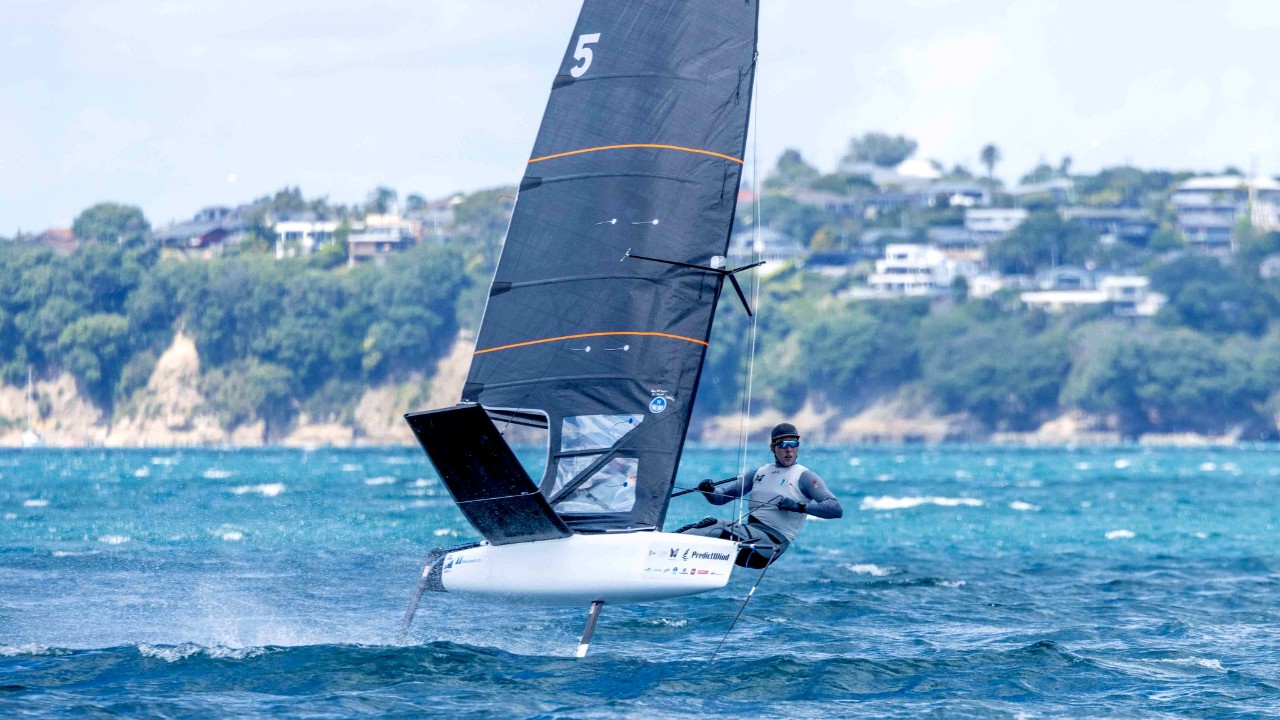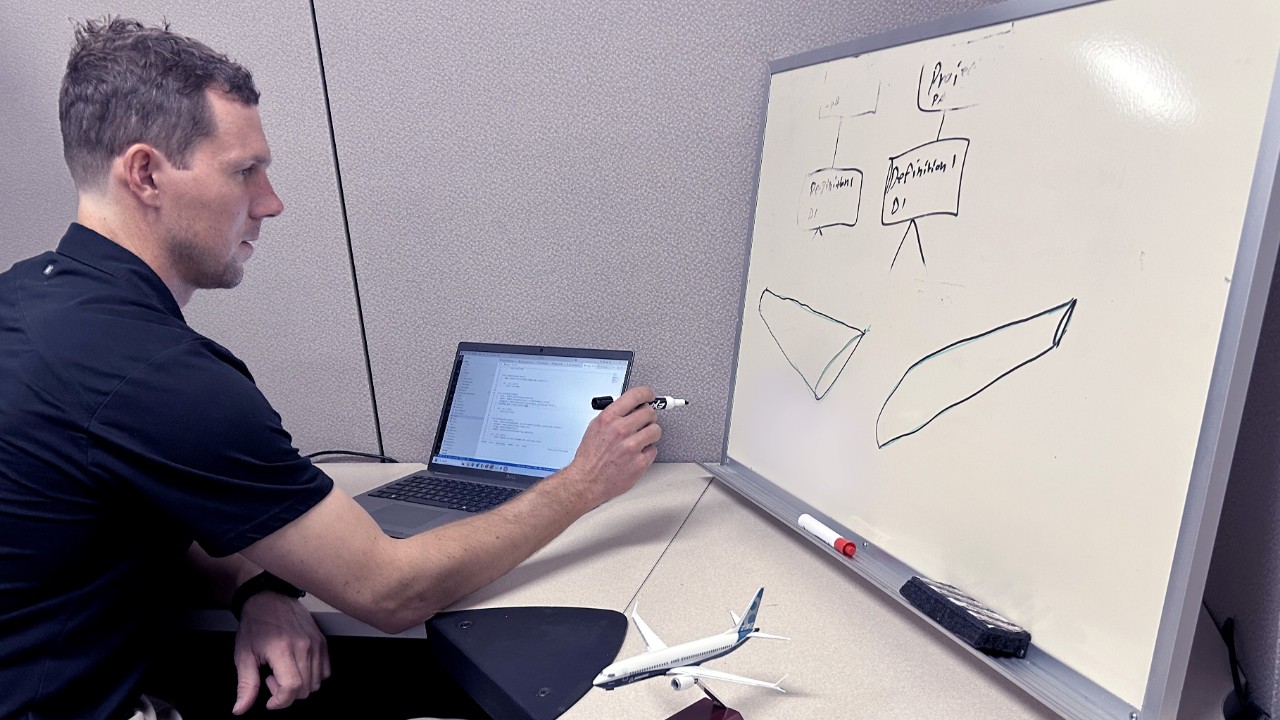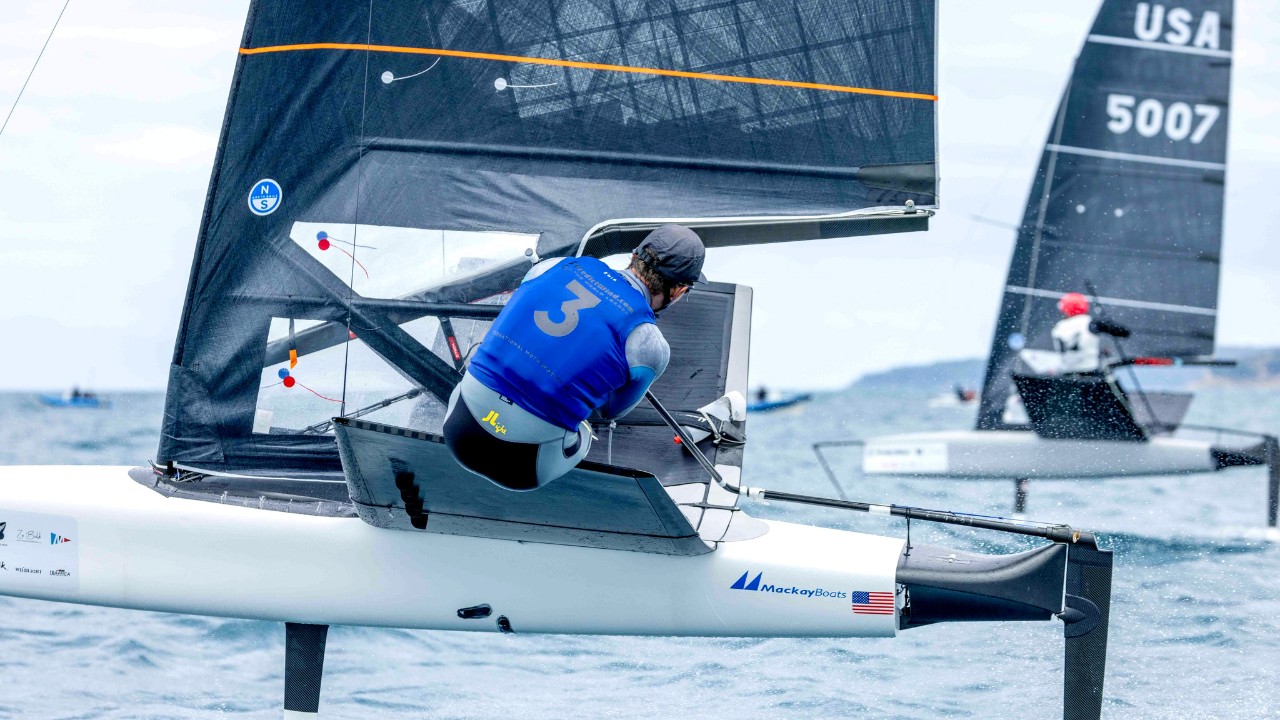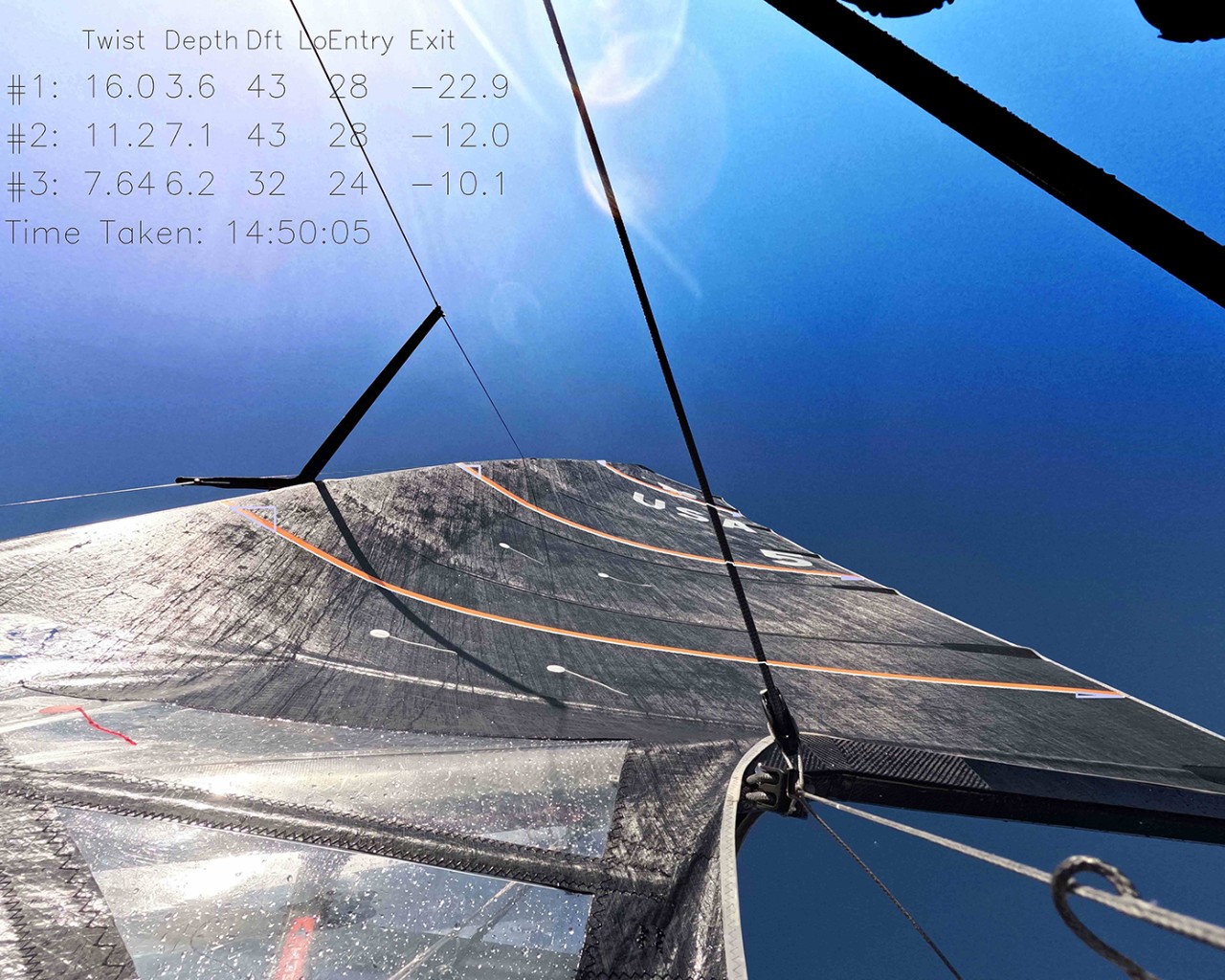Wings, Wind and Water
Software expertise and sailing experience give engineer a competitive edge
 SAIL SET: Off the shores of Auckland, New Zealand, Richard Didham races a moth sailboat, which uses hydrofoils to lift the hull out of the water, significantly increasing speed. PHOTO: COURTESY OF RICHARD DIDHAM
SAIL SET: Off the shores of Auckland, New Zealand, Richard Didham races a moth sailboat, which uses hydrofoils to lift the hull out of the water, significantly increasing speed. PHOTO: COURTESY OF RICHARD DIDHAM
By Quinn Marciano, Boeing Writer
Software engineering has the power to lift technology and push performance, as Boeing engineer Richard Didham has proven by developing applications for both airplane development and sailboat racing.
Code in the cloud
Didham led a Boeing team to develop a cloud-based software product that enables engineers to create and deploy web applications to ingest, store and retrieve data. Conceived as a proof of concept for Boeing Commercial Airplanes, Didham and his team recognized the platform’s potential for broader applications.
The versatile tool now supports 27 different applications across the company, helping teams manage data in flight sciences, loads and dynamics, structures modeling and electromagnetic effects.
“Seeing the growth in the adoption of the software and witnessing its impact has been one of my proudest achievements at Boeing,” Didham said.
In other work, Didham has developed an application that automates structural test planning. Beneath this curiosity for software applications and data-driven performance is an obsession with sailboat racing.
 DESIGN DEFINITIONS: Didham considers multiple definition requirements as he designs software applications to improve performance and producibility. PHOTO: BOEING
DESIGN DEFINITIONS: Didham considers multiple definition requirements as he designs software applications to improve performance and producibility. PHOTO: BOEING
Sailing: A passion and a parallel
An avid sailor, Didham races a class of sailboat known as the moth. These high-performance boats use hydrofoils to lift the hull out of the water, significantly increasing speed. Didham readily recognizes the similarities between sailing and aerospace, particularly in the design and dynamics of sails and airplane wings.
 PRIME PERFORMANCE: Racing in the 2025 Moth World Championship in New Zealand, Didham achieved his best result yet, finishing eighth overall, as the top U.S. competitor and the top amateur in the competition. PHOTO: COURTESY OF RICHARD DIDHAM
PRIME PERFORMANCE: Racing in the 2025 Moth World Championship in New Zealand, Didham achieved his best result yet, finishing eighth overall, as the top U.S. competitor and the top amateur in the competition. PHOTO: COURTESY OF RICHARD DIDHAM
“A sail is effectively the same thing as an airplane wing, so there is a lot of overlap between sailing and aerospace,” said Didham, who designs and builds carbon fiber parts for his boat.
In discussions with his coaches and sail designers, he talks through boat dynamics and sail properties to understand how a sail might react in different wind conditions.
He’s also developed a software application that employs computer vision algorithms to analyze sail shapes, calculating variables such as chamber, twist and lift. Didham uses the app to analyze and optimize his race performance.
 DO THE TWIST: In sailing, lift is the force that pushes the boat forward. Lift causes induced drag, and as a sail twists, both drag and lift decrease. It’s important to balance lift and drag throughout the race. PHOTO: COURTESY OF RICHARD DIDHAM
DO THE TWIST: In sailing, lift is the force that pushes the boat forward. Lift causes induced drag, and as a sail twists, both drag and lift decrease. It’s important to balance lift and drag throughout the race. PHOTO: COURTESY OF RICHARD DIDHAM
“These variables are just as important for sailing performance as they are for the aerodynamic performance of an airplane wing,” Didham said.
In sailing, sails catch the wind to create lift and propel the boat. This lift creates air turbulence, which causes resistance against the boat’s motion. This resistance is called induced drag.
“Sailing is a very technical sport, and discussions about boat dynamics often mirror engineering meetings,” Didham said. “Communicating effectively with people from varying backgrounds is crucial for success, so sailing has also refined my communication skills.”
“Richard consistently brings fresh ideas to the table, not just in our projects, but also in how he engages with the engineering community,” said Greg Jones, Boeing engineering manager. “His discoveries push the boundaries of what’s possible in software engineering and aerospace technology.” IQ